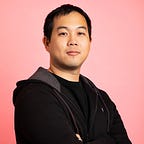What to do if you are not getting UX design interviews?
If you are new to UX and searching for your first job, you may be experiencing the cycle of applying to hundreds of jobs and ending up with rejections or not getting a response at all.
While your on-paper experience is certainly a crucial factor influencing your chances of landing a job interview, it is important to recognize that other variables may also impact the outcome of your job hunt. Experimenting with other factors of your job searching routine can potentially improve your chances of securing that sought-after interview opportunity.
Optimize the timing of your application submission
With the job market at the time of this writing, a new design job posting can easily accumulate hundreds of applications within the first day.
This means that if you don’t apply on the first day, regardless of how qualified you are for the position, you will not get an interview because your application will likely not be viewed at all. Most people associate the lack of interviews with resume or portfolio issues, but it is more or less a game of speed.
One way to tackle this challenge is to spread out your application routine. For example, instead of applying once a week on a Friday night, try to apply a couple of times per day, every single day. This change of routine can enable you to apply for more jobs before the applications pile up.
Branch out to find more job postings
If you have been searching for jobs primarily on a couple of popular job boards, then you may uncover more leads by branching out to other sites that may be less well-known.
You should look into sites that already attract designers because the site may offer a job board. For example, Dribbble and Behance. Another option is to look into niche job boards such as Wellfound for startup jobs and Remote.co for remote jobs. These secondary job boards may also have less competition, so your chances of getting noticed are going to be higher.
Tip: It is not a great experience for you to just sit on the computer all day to refresh job boards looking for new postings. Most job boards offer features to notify you when new jobs are listed. You should take advantage of this to help yourself stay on top of roles you can apply to.
Gain insights to help you improve
There are dozens of things you could do during job hunting that may seem productive. While most efforts will have a positive impact, the scale of the impact may be significantly different. To help you identify the right efforts to focus on, you need insights.
You can get feedback from other designers. For example, talk to a peer that may be having more success than you at job hunting to understand what he/she is doing differently. You can also reach out to and chat with more experience designers about your job-hunting routine and your portfolio or resume to see if you should experiment with something different.
Another type of insight you should consider getting is quantitative data from your portfolio. If you are not tracking your own portfolio site, consider setting up Google Analytics (it’s free) and integrating that into your portfolio website. When you are deciding your next portfolio updates, consider the number of visits, time on site, and which projects people visit the most.
Increase your value as a designer
The job hunting process can take several months, which is a longer period of time for the tech and design industry. You should continue to grow as a designer even when you are searching for your next role. More importantly, your chances of getting an interview will stay the same or decrease over time if you are not able to offer more value as a designer. Therefore, consider picking up additional skills or getting more design experience to add to your resume or portfolio.
One low-hanging fruit is to find and get involved in non-profit design opportunities, which are easier to obtain than full-time paying jobs. Another idea is to attend workshops or take additional online courses about a specific skill or topic, such as design systems or accessibility. Then make sure you add these new experiences or skills to your resume to improve your chances of getting an interview.
Summary
While your application material undeniably plays a significant role in landing a UX design interview, keep in mind that there are other factors that may also impact your chances. To propel yourself to the next stage of the interview process, consider the following:
- Optimize your application routine
- Expand your lead generation
- Obtain insights to improve yourself
- Increase your value over time
As you navigate the journey of UX design job hunting, remember that your efforts to experiment, adapt, and elevate your design prowess are the keys to opening the interview doors.
The insights within this post are part of my UX Job Playbook, which is a practical guide to UX job hunting. Learn more about what to expect throughout the job-hunting journey, how to prepare for interviews, and get resources to help you accelerate your job-hunting process.
